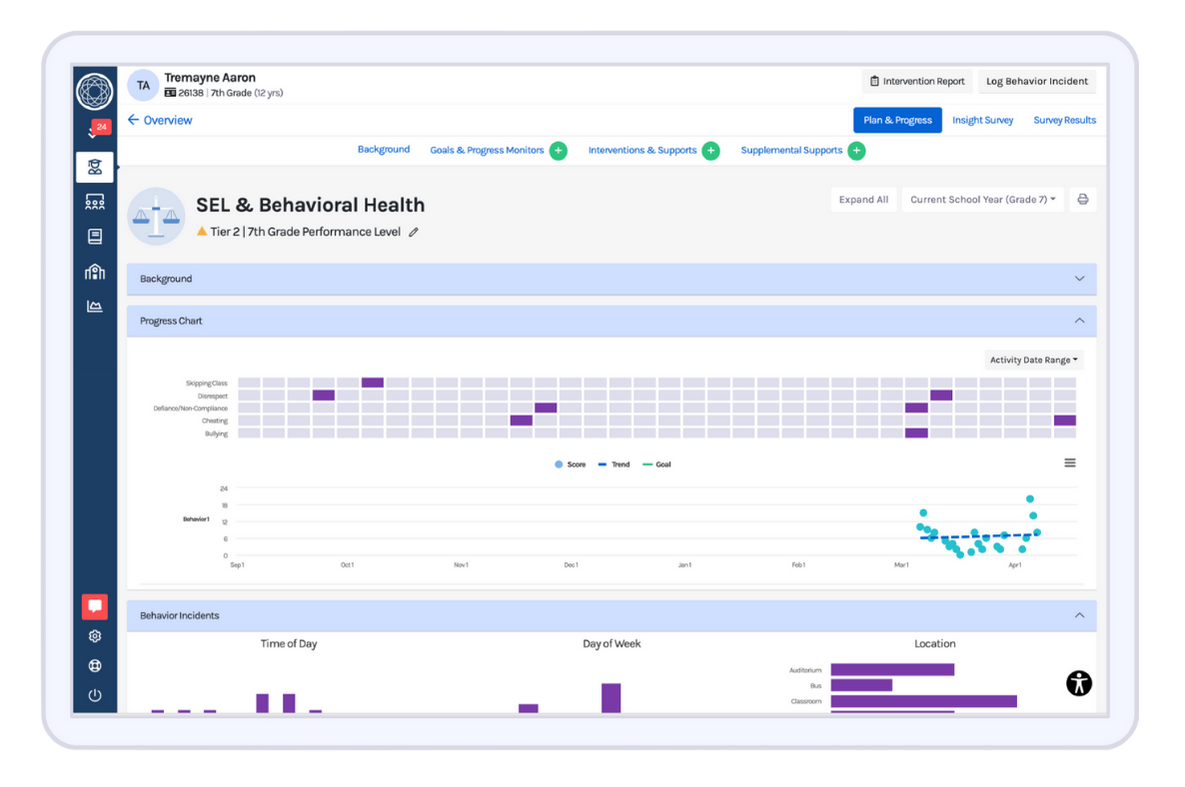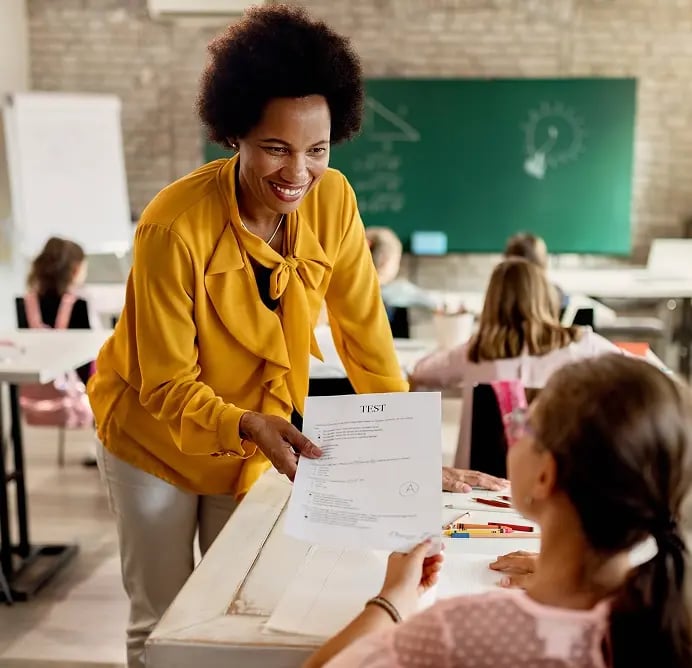When I started teaching, I had no real understanding of what an effectively managed classroom looked like, beyond the basic image of students quietly seated and listening to their teacher. Discussions about classroom management from administrators often focused solely on a teacher's ability to handle disruptive behavior.
MTSS Classroom Management Highlights
- Classroom management is about support, not just discipline—it creates structure, independence, and emotional safety.
- SEL and strong relationships are essential—they reduce disruptions and teach lifelong skills.
- Collaboration matters—students and teachers thrive when management is a shared effort backed by school-wide support.
However, classroom management is much more than student discipline. True classroom management goes beyond rules and discipline to create a rich, supportive environment where students can thrive academically and socially.
Effective classroom management is about building a foundation for learning, fostering relationships, and helping students develop the skills they need to succeed. It’s a dynamic process that touches every part of the classroom experience.
Recently, during a conversation on the Schoolin’ Around podcast, educators Ashley Roberston and Emily Jordan shared how important it is to see classroom management as a key aspect of student success.
Reframing Classroom Management
A well-managed classroom doesn’t just prevent chaos; it sets the stage for productive, engaged learning. To achieve this, the classroom must feel purposeful and inclusive. Students should feel a sense of agency, knowing they’re part of a shared goal rather than just subjects to be controlled.
An effective classroom is not necessarily quiet. Emily Jordan, a climate and SEL (Social-Emotional Learning) instructional coach, describes a well-managed classroom as one that feels calm, focused, and purposeful. “You want action to happen, learning to happen,” she said, emphasizing that productivity doesn’t always mean silence. Noise can be a sign of active learning, as students collaborate and problem-solve. Instead of focusing on silence, teachers can aim for productivity, where every sound contributes to engagement and learning.
🔑 Key Traits of a Supportive Classroom
- Clear boundaries and routines to guide student behavior consistently.
Independence for students through accessible materials and clear directions. - A focus on emotional self-regulation to equip students to manage their responses.
- Positive interpersonal connections, fostering mutual respect and understanding.
Rather than stepping in to manage every small issue, teachers can design classrooms where students feel empowered to take charge of their learning.
💡 Blog: The Student Role in Shaping School Culture
The Critical Role of Social-Emotional Learning
Social-emotional learning (SEL) is a core component of classroom management. More than ever, students enter classrooms without fundamental social and emotional skills. They may struggle with managing frustration, working collaboratively, or even knowing how to ask for help.
SEL shifts the focus of classroom management from merely correcting behaviors to teaching students how to communicate, self-regulate, and build relationships effectively. These are lifelong skills that benefit them far beyond the classroom walls.
Ashley Robertson, Director of Social-Emotional Learning and Support, encouraged teachers to ask themselves, “What is this behavior trying to tell me?” rather than rushing to punishment. Recognizing that behavior is often communication is a critical shift in mindset.
♥️ Practical SEL Practices
-
Explicitly Teach Skills: Show students how to handle emotions or ask questions appropriately instead of assuming they already know.
-
Embed SEL into Daily Activities: Incorporate emotional check-ins, group problem-solving, or discussing handling challenges.
-
Respond, Don’t React: When students are overwhelmed, take time to understand the root of their behavior before addressing it.
SEL isn’t just a “nice-to-have.” It’s a necessity to create classrooms that honor students’ needs and help them grow.
💡 Blog: 4 Common Questions on Integrating SEL & Behavior in MTSS
Building Relationships First
We’ve all heard it from an administrator: “It starts with relationships.” It may sound cliché, but it’s true. Sometimes it feels like a cliche, but it is true. Positive student-teacher relationships create a foundation where discipline becomes less about control and more about mutual accountability. When students feel seen and valued, they’re more likely to engage and respond to guidance.
🤝 Relationship Strategies for Teachers
- Be Genuine: Show your humanity to your students. Share your personality and interests, and take the time to get to know theirs.
- Start with the Positive: Focus on the good behaviors happening in your classroom, not just the negative ones. Highlight and celebrate what’s going well to encourage others to emulate it.
- Understand the Underlying Needs: Behavior is often a form of communication. Ask yourself what a disruptive behavior might be signaling rather than jumping straight to judgment.
Strong relationships set the stage for success in every other area of classroom management.
Classroom Management as a Partnership
One of the biggest shifts in how educators approach classroom management is the idea of building an environment with students, not managing the classroom for them. This collaborative mindset gives students a sense of ownership over their learning and fosters independence.
🧑🏫 How to Create a Collaborative Classroom
- Co-Create Rules and Routines: Include students in the process of setting expectations. When they contribute, they’re more likely to take those expectations seriously.
- Celebrate Progress Together: Turn improvement into a shared goal and create group incentives to build a sense of accomplishment.
- Teach Decision-Making Skills: Help students develop the skills to make positive choices by modeling decision-making processes.
This partnership-oriented approach transforms classroom management from a chore into an opportunity to build character and social skills together.
💻 Webinar: Ask the Author: Executive Functions for Every Classroom
The Role of Training and Support
Effective classroom management isn’t something every teacher masters immediately. It relies not just on individual willingness but on systemic support at the school and district level. Regular professional development, coaching, and collaboration opportunities are essential. Sessions on de-escalation, restorative practices, and trauma-informed teaching can equip teachers with strategies they may not have encountered in their initial training.
Additionally, administrators play a critical role in setting the tone across an entire school, empowering teachers to create classrooms that model respect and understanding.
💫 How Leaders Can Help
- Set Clear School-wide Expectations: Consistency across classrooms helps create student stability.
- Invest in Tier 1 Supports: Proactive systems that address behavior schoolwide help lighten the load on individual teachers.
- Enable Collaboration: Coaching, mentoring, and peer learning opportunities allow educators to grow together.
Building a culture of classroom management at the school level amplifies its effectiveness in individual classrooms.
A Future of Possibilities
The future of classroom management is about creating inclusive, supportive environments. By embedding SEL, prioritizing relationships, and moving away from punitive methods, classrooms can become spaces where every student feels valued and capable.
“I’m really hopeful that the future of classroom management is less about fixing kids and more about building the environments where they can be successful,” Ashley said. When management shifts from control to collaboration, everyone benefits. As education evolves, so must our approaches to teaching and supporting students. Classroom management is no longer just about enforcement—it’s the foundation for healthy, purposeful learning spaces. Educators can shape students’ futures with care and intention by focusing on the big picture.

About the author
Larissa Napolitan
Larissa Napolitan is the Content Marketing Manager at Branching Minds and host of the Schoolin’ Around podcast, where she spotlights innovative voices and practices shaping education today. A former middle school teacher and instructional coach, Larissa draws on her classroom experience to create meaningful content that connects research, storytelling, and practical insights for school and district leaders. She is passionate about amplifying educator voices and supporting the growth of all students.

Behavior Documentation Reimagined 💫
Ready to rethink behavior documentation? Branching Minds helps turn incident data into meaningful action with tools that simplify the process and empower educators.















.png?width=716&height=522&name=5%20Tips%20for%20De-Escalation%20and%20Building%20Strong%20Relationships%20with%20Students(preview).png)

